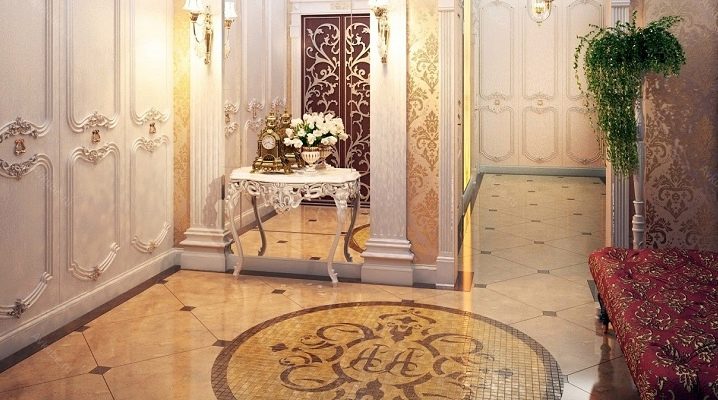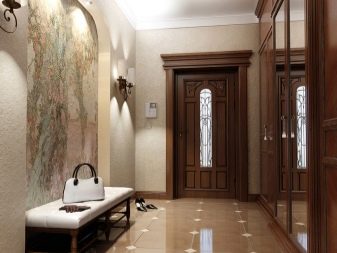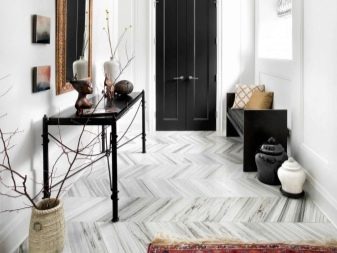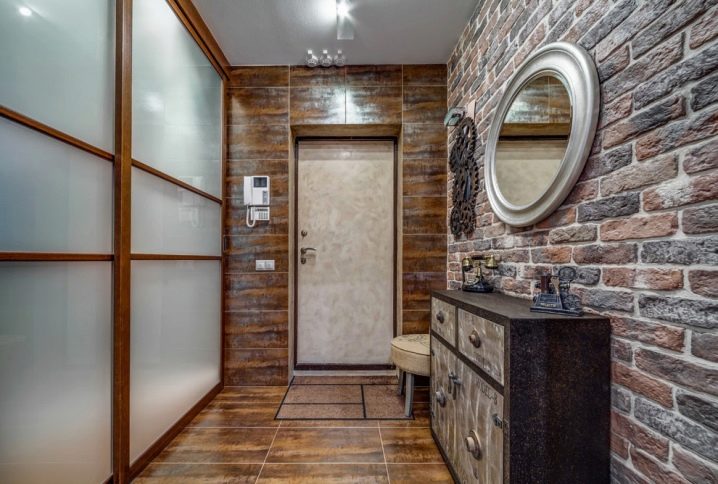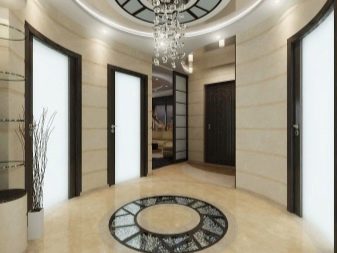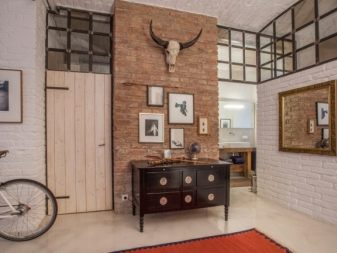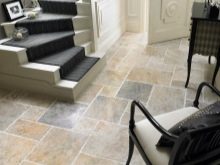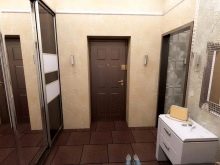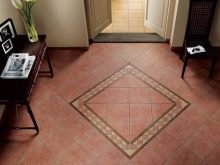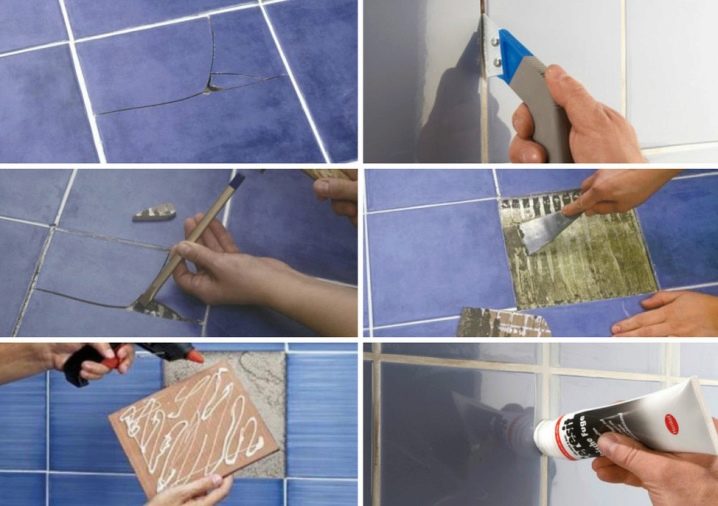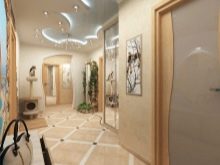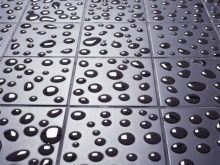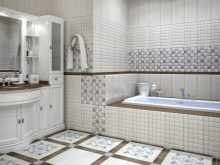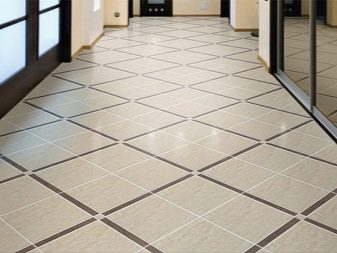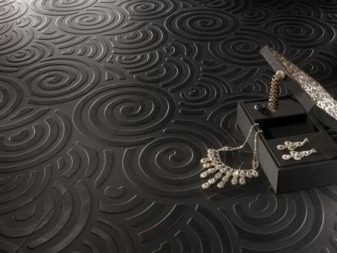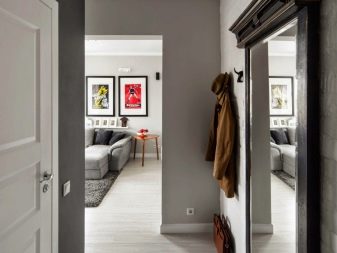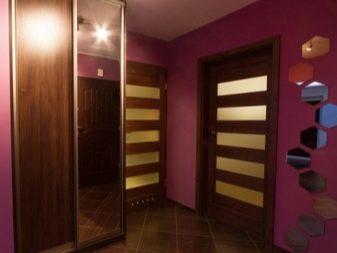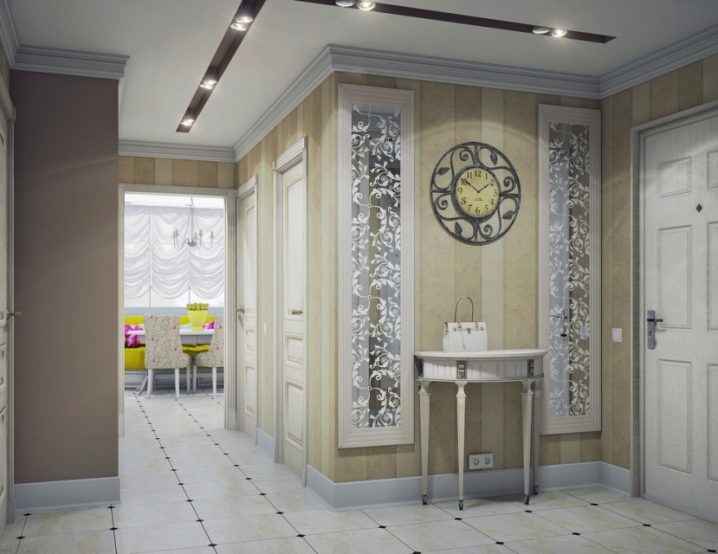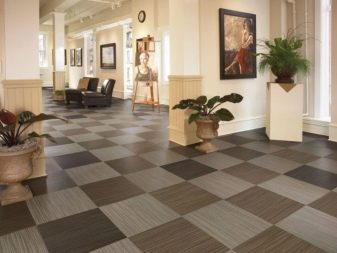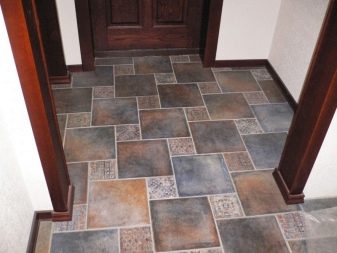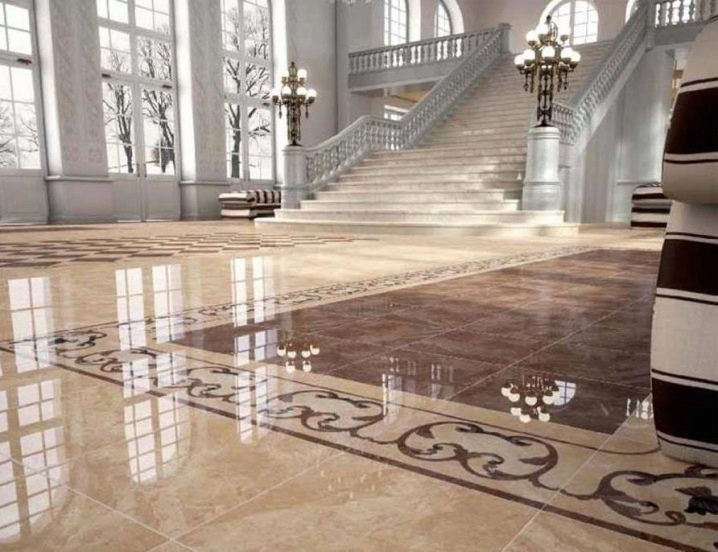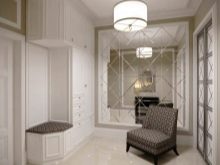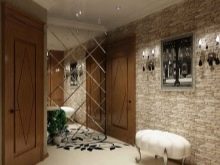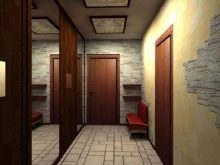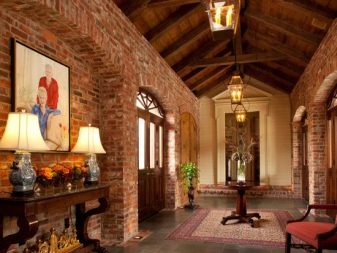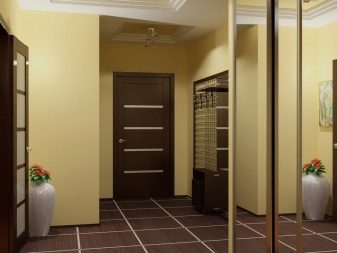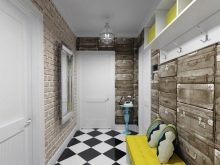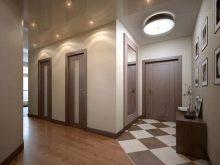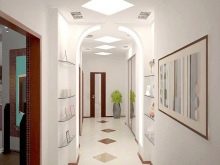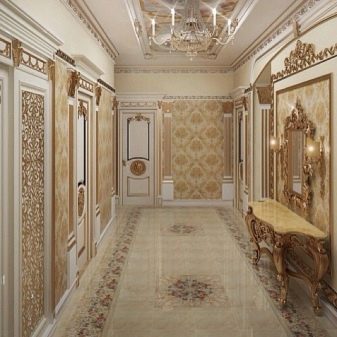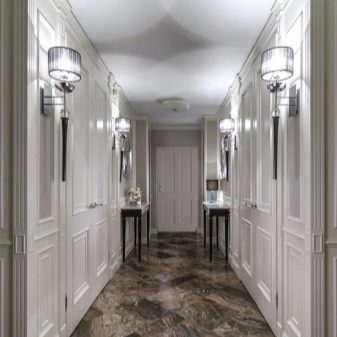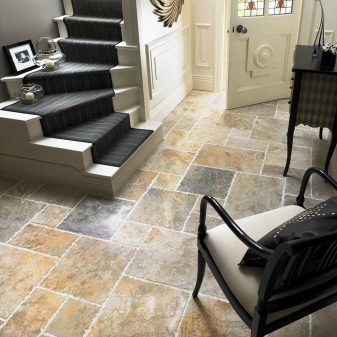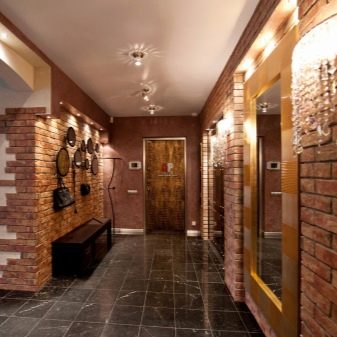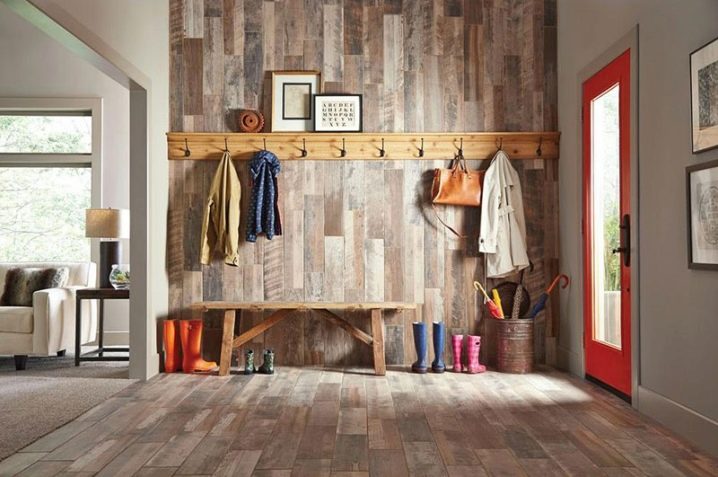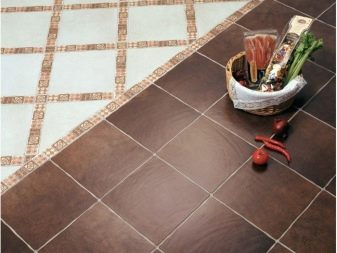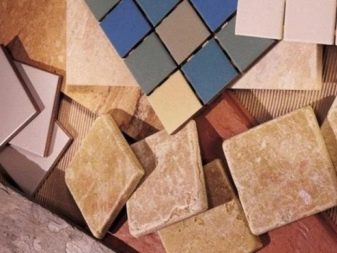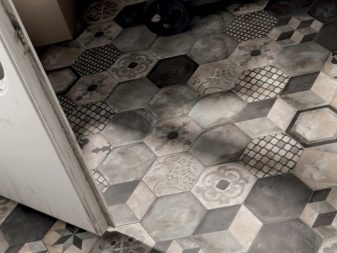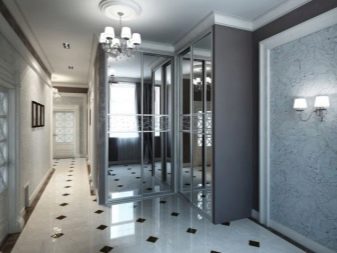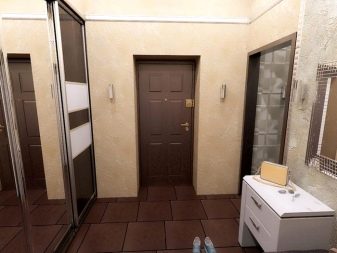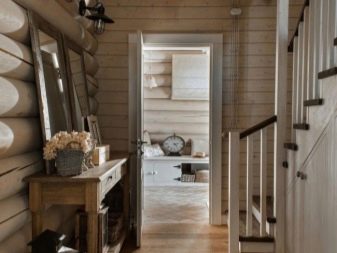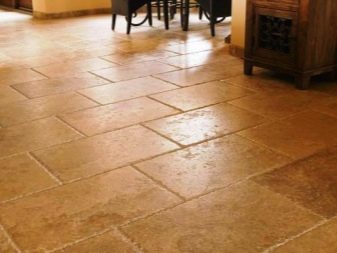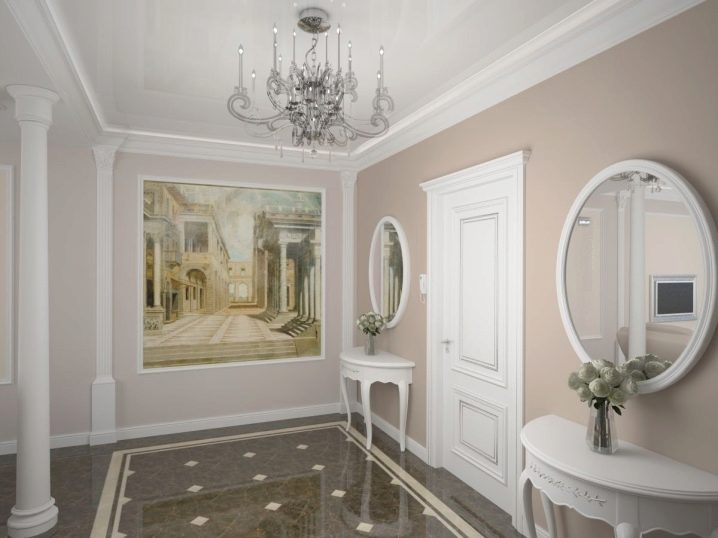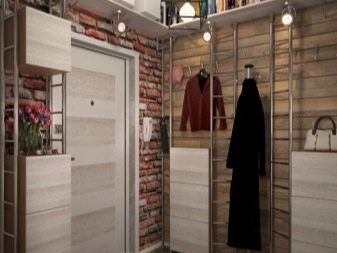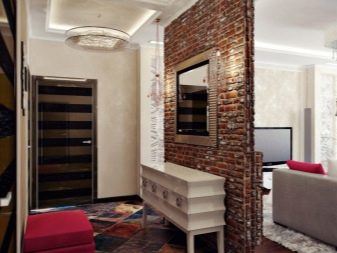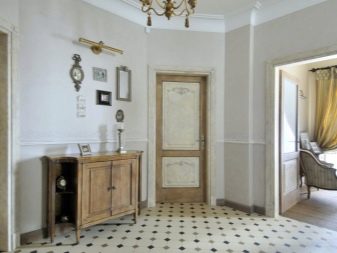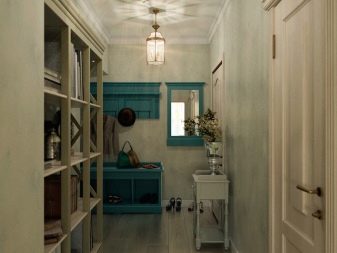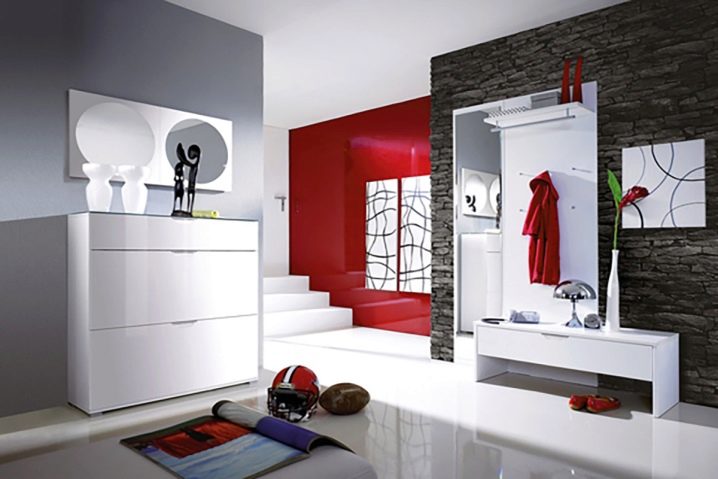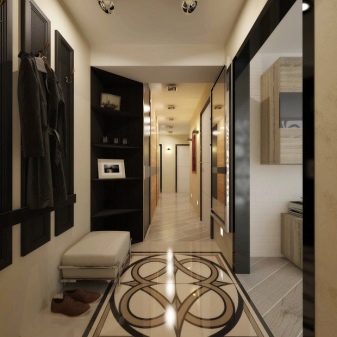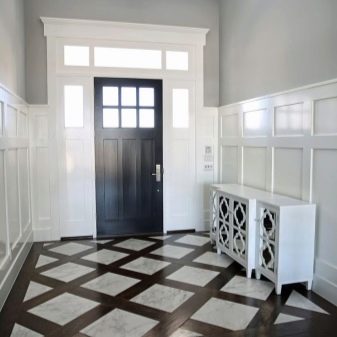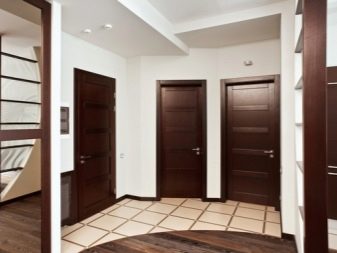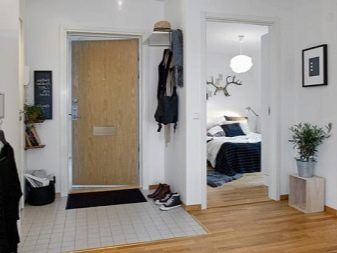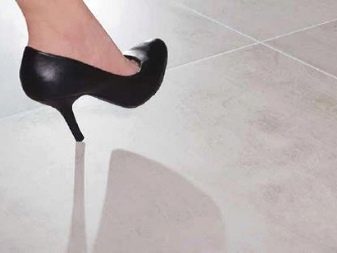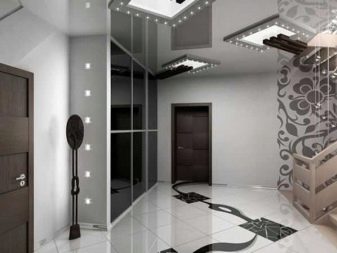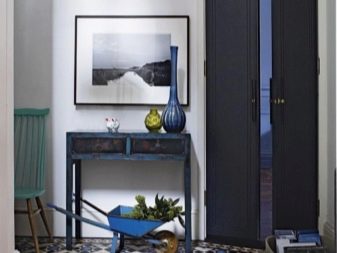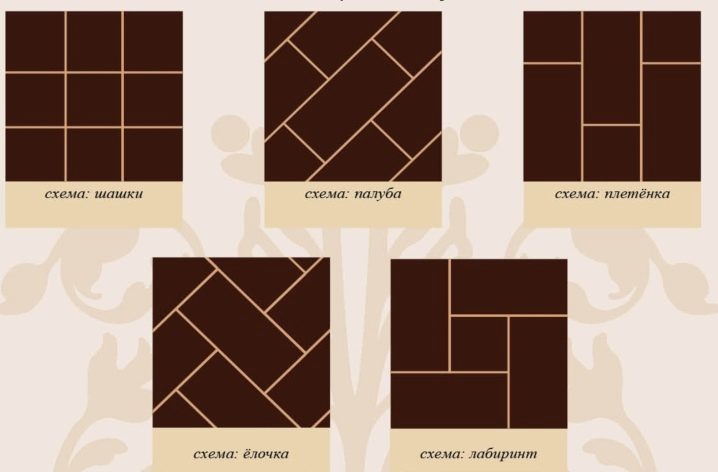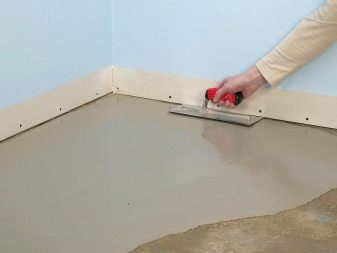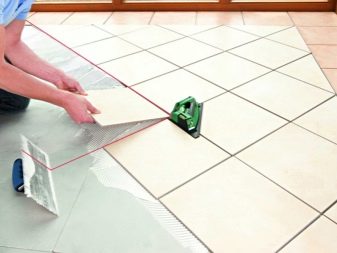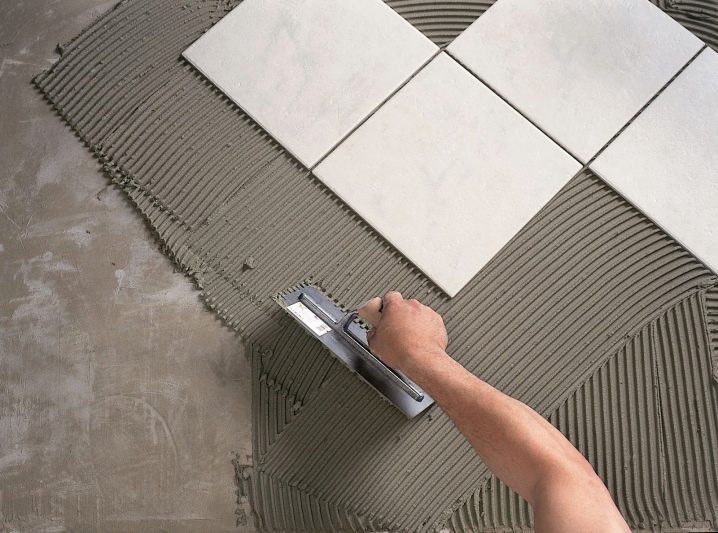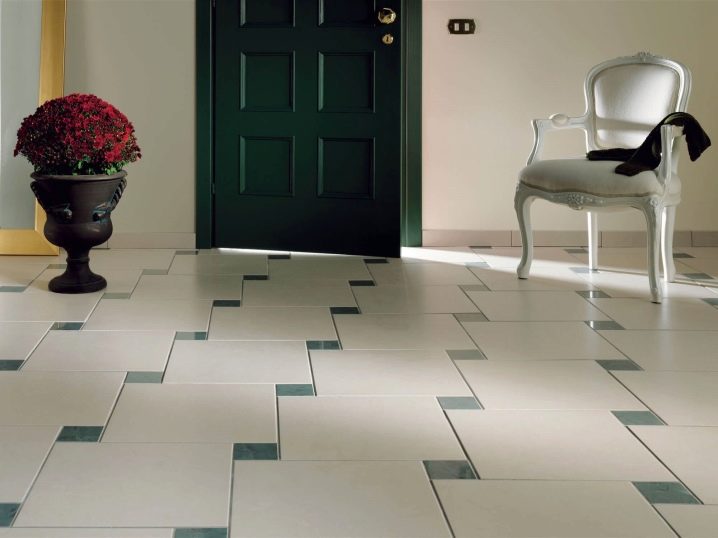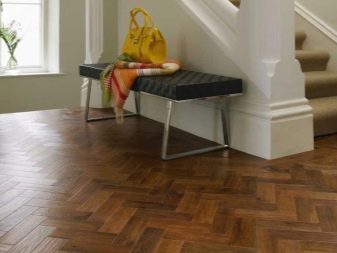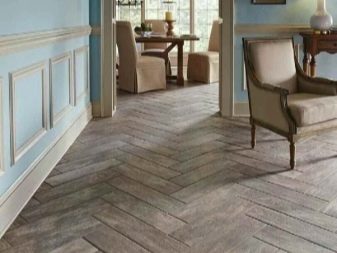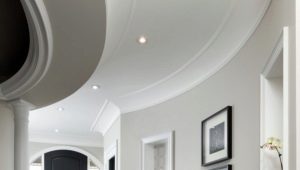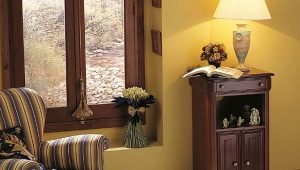Selection of floor tiles in the corridor
Among the materials that are used to finish the floors in the hallway and corridor, the most popular is tile. But sometimes it is difficult to make a choice, since manufacturers represent different models and variants of such coverage. All of them differ in their quality characteristics and external properties. That is why it is necessary to study the characteristics of all types of tiles and consider different options for finishing floors such a coating.
Special features
The main criterion when choosing a tile is usually not external properties, but quality. Since the hallway is usually high throughput and high humidity, they get the highest quality and dense tile. To do this, it is imperative to study the labeling on the packaging with tiles and give preference only to models that are designed for such premises.
Feature of the tile for the hallway and corridor is that it should not be porous. As a rule, models designed for such premises have a low percentage of water absorption and good protection against deformation and absorption of moisture. That is why it is necessary to acquire models that have undergone serious heat treatment.
The materials from which the tile is made for hallways, usually durable and wear-resistant. Such tile serves decades. In addition, its peculiarity is immunity to the effects of chemicals and the tolerance of wet cleaning. It is in the corridors at the entrance that the floors are most often washed and swept.
Therefore, preference should be given to models with a porosity of less than 3%. This is especially true of apartment dwellers.
In the hallway usually acquire tile, which belongs to a high class of wear resistance, which is a characteristic feature of such a material. For the corridor and the hallway are models of the third or fourth class.
At the entrance you need to lay the most stable and high-quality tiles, for example, porcelain stoneware, and further, closer to the corridor, you can trim the floor with a more whimsical coating.
Tile as a material for the floor in the hallway is chosen precisely because it is resistant to mechanical stress. In the corridor they often move bags on wheels or strollers, bicycles, suitcases there often walk in shoes with heels, and also a large amount of dirt spreads.
The next characteristic for the tile in the hallway is that it should not be slippery. That is why they prefer textured or matte models. Glossy tiles can slip from the moisture that you bring from the street. That is why on the floor you can slip and fall. Thus, corridor covers usually have an increased slip resistance and a high coefficient of friction.
As they bring a lot of dirt from the street to the hallway, the tile prevents its spread. This is a very hygienic material. Models for the corridor can be washed and cleaned in almost any way. Such floors do not allow mold and mildew to spread.
A good coating can serve for about 50 years without changing its external and quality characteristics. An important feature of the tile is its fire resistance.It is not subject to the spread of fire, as well as the temperature fluctuations inherent in the hallway. It should also be noted environmental friendliness and naturalness of this coating. The composition of the floor tiles is completely harmless, so it is safe for humans.
Another feature of this coating is that it can be easily restored. If you suddenly damaged one element, it is not necessary to dismantle the entire coating. You can only remove the defective part of the tile and replace it with a new one.
Differences from shower ceramics
In general, there are no hard and fast rules that would divide the tile into a shower and models for finishing the hallway and other areas. But still, experts recommend paying attention to some of the individual qualities of ceramics, selecting it for stacking in different zones.
An important difference concerns the quality of waterproofing. For bathroom models, this figure should be maximum, because in this room is always wet and damp. But in the hallway is usually drier. In warm weather, there is no moisture at all.
Another difference is relief. Models with a volumetric texture are always placed in the bathroom and they never lay smooth tiles, as it is likely to slip.In the hallway it is impractical to lay tiles with three-dimensional relief, since all the dirt that you bring to your shoes from the street will accumulate there.
In the hallways put a cover with moderate relief.
Tiles for the bathroom and for the corridor are often different in design. So, in the bathroom is placed mostly light or bright cover with a variety of patterns. But for the hallway pick up a model in a darker design for reasons of practicality. On such a tile is not visible dirt and stains.
Kinds
In the corridor and the hallway put a variety of options for tiles. All of them differ depending on the composition:
- Ceramic tile - This is the most popular coverage. It is based on clay, burned at high temperature. Models can be smooth or embossed. The texture of the tile can be very diverse, as well as the design. Ceramic tile is the most fragile of all options.
- Quartz-vinyl. This coating includes quartz sand, plastic compounds, vinyl, stabilizers and color pigments. But most of all in the composition of quartz, which is the basis of the tile. Vinyl, which is also included in its composition, causes wear resistance,strength and flexibility of the coating. This tile is harmless to human health and does not contain toxic substances. It is often produced in an interesting design that imitates other natural materials, such as wood and natural stone.
- Porcelain stoneware - the most reliable and high-quality type of tile. As a rule, it includes granite chips, feldspar and other compounds, as well as pigments. Porcelain tile is made under the influence of high temperature and under a large press. That is why it is the most dense and durable, and the level of its water absorption is less than 1%. Porcelain tile is much more expensive than other types of tiles, but even in the hallway with high traffic it can serve for many years.
Colors
Color tiles for the corridor are selected depending on the interior design. So, now popular models in light shades. But, as a rule, not smooth models are selected for corridors, but products with rough edges or interesting textures.
The shops feature a wide selection of light tiles. It looks more elegant and is suitable even for the hallway and the corridor. This is due to the fact that the smallest area is allocated to these parts of an apartment or house.
That is why it is important to visually expand such a zone by any means, one of which is the use of light coatings.
A tile of dark shades is put only in spacious halls. And they decided to complement the light furniture. Now the actual combination of light and dark tiles. Such a contrast will look brighter than a monochrome coating, but at the same time it will also be not so branded.
Corridors are characterized by the use of colored coatings laid out in staggered patterns or diamonds diagonally. The most popular models for such rooms are gray, brown, beige, terracotta, dark green. At the same time prefer only matte tiles.
The color design of tile models is also affected by its design. So, there are dark options that imitate natural stone, there are marbled products. Both those, and others look elegantly and elegantly. In the corridor, tiles with wood texture and in natural “wooden” shades are often laid. It can be both light and dark samples.
Especially popular tile design antique.
Dimensions
Standard sizes are floor tiles 30 by 30 or 20 by 20 cm.These are square equilateral models that are easy to lay with your own hands. But manufacturers are other options, for example, a rectangular shape. These are models 30 by 20 or 25 by 20 cm. In addition, within the same collection, manufacturers often represent tiles of the same design, but of different sizes.
There is a larger tile measuring 40 by 40, 60 by 100 or 70 by 120 cm. As a rule, it is easier to stack, especially if the hallway in the house has a long and narrow shape.
For a brighter design project choose colored tiles of small size. These can be models 10 by 15 or 10 by 10 cm. More standard are models 15 by 15 cm. Moreover, all types of tiles are available in different forms.
If it is a rectangle, then the sides often correspond one to two or one to three.
In various styles
In the corridor with a modern interior is better to put bright tiles or use contrasting solutions. So, it looks good and coffee beige, black and white version, red and white combination. The tile can be laid in a checkerboard pattern or display any pattern.
If you make out the interior in country or country style, then you can use models of tiles under the tree or paved board. The main thing is that the floor with such a coating appears massive and natural.
If the interior of your apartment or house prevails classic style, then you can choose a trendy marble or plaster tile. This stylish, but rather strict design will be harmoniously combined with the bright facades of the closet and other furniture in the hallway. But a more versatile option for the hallway is a plain coating.
In the corridors with an interior in style loft the tile under a brick or a large stone will perfectly look. Best suited models of porcelain.
To complement the interior in style provence it is better to choose a tile covering with an artificially aged texture and interesting relief. For this fit a coating that mimics natural materials.
Preference should be given to models of pastel colors.
Interiors in style hi-tech or minimalism You can make a glossy or mirror tiles, revealing the ceiling with similar coatings. You can even make a glossy plinth of porcelain. For such a hallway more suitable cover gray, dark beige, black. Tiles with a 3D pattern will perfectly fit into such interiors.
What's better?
In the hallway you can lay not just tile, but make a combined floor. So, you can tile the floor at the entrance, and the rest of the hallway can be trimmed with another coating. But some types of tiles, such as porcelain, are thicker. So a small threshold can be formed. Therefore, tiled flooring can rise by about 5 cm above the floor level. This is a convenient option for a hallway, since at such a threshold you can make a pereobuvaniya area. So dirt with water will not fall into the corridor.
It is important that the combined coatings are something similar in appearance.
So, you can visually find almost identical models for wood or laminate and use the same, but natural coating a little further from the entrance. It is important to properly match the materials and select the appropriate external qualities of the model.
When combining different flooring can make a direct or figured separation or transition. In the case of a linear division, the boundaries should be straight and even, but when creating a figured border, you should correctly cut the materials and make the necessary calculations.But the interior will look more original and stylish.
Tiles are best suited for flooring in the hallway compared to other materials. For example, linoleum does not tolerate temperature extremes. It can swell and change its external properties. In addition, it quickly fades. As for the laminate, from the effects of moisture dies can diverge and the appearance of the floor is no longer as presentable as it was before. That is why the facing tile for the corridor is also superior.
How to choose?
When choosing a tile, be sure to pay attention to the batch number. Customer reviews show that in different batches models may differ in color and even in size. Therefore, you need to compare finishing materials to make a high-quality and uniform floor covering. Wear resistance class, which is suitable for the corridor and outfit - the third and higher. At the same time water absorption should be low.
The allowable friction coefficient for tiles in the hallway is 0.75 and below. You should also pay attention to its grade. It is advisable to purchase models of the first grade, otherwise their quality characteristics will be significantly reduced, and the tile itself will be uneven and you will have to cut it.
Pay attention to size.If the hallway is small, then it is better to lay small mosaic tiles or panels in it. But in the hallway and the corridor in a two-room apartment with a large area you can stack large models with an already prepared applied ornament.
It is important that the cover does not slip in the hallway. Therefore, pay attention to the anti-slip performance. These are samples labeled P10 or P11. It is important to pay attention to the relief of the coating. Options with shallow and deep elements of the texture will be clogged with dirt, they will be difficult to clean. Absolutely smooth models should also be discarded, as they will slide heavily and create inconvenience in wet weather. Grout is better to pick the most unmarked.
Do not forget that, over time, not only the coating can get dirty, but also the seams between its elements.
Piling
Tile in the hallway put in different ways. Moreover, it is quite easy to put it in your own hands, you just need to know some nuances. So, first of all it is necessary to consider what the floors are made of. If the floor in the hallway is concrete, then it must be leveled. To do this, use a special composition and construction level, which allows you to make a perfectly flat surface. Then, when the solution dries, you need to apply a primer.
Laying the tiled floor involves marking. therefore Initially, you should calculate how many tiles you need and which size models should be preferred. When laying you need to start with a corner. Calculate and mark where the floor covering elements will be laid. You will need this in order to cut the tile and simplify its joining.
Then for laying you need an adhesive solution. It can be purchased at the store. For its preparation, it is necessary to dissolve the dry substance in water in the ratio specified in the instructions, and stir using a special nozzle for a drill. Glue should be left for about 15 minutes and then mixed again. So the solution will be more uniform and high quality.
Apply glue with a smooth spatula. To ensure a quality layout, you need to level the adhesive composition with a notched trowel.
It should be applied on the floor, and then on the tile. At the same time it is necessary to do it gradually. You should not first cover the entire floor with adhesive, and then lay the tile.
Start laying tiles on an area of 1 square. mAt the same time, use special construction crosses. With their help, you can align the seams between the elements, as well as make styling more smoothly and correctly. At the end of the installation, it is necessary to make an adjustment so that the coating lays more evenly.
When the glue is dry, it will be possible to process the seams between the elements of the tile. It is better to use a rubber spatula. It will not damage the floor surface in the hallway and will make it perfectly smooth.
After laying, you should regularly moisten the interfacial seams for about a month. So the coating will last longer and is not deformed.
See the following video for an interesting way of laying floor tiles.
Options in the interior
In the interior of the hall it will be interesting to look beautiful styling with an offset. It allows you to visually expand the space. You can simulate brickwork in this way.
In the corridor, you can lay a decorative tile under a tree with a Christmas tree pattern or make your own styling from large elements. To do this, select a rectangular tile and put it in a triangle to one another.
